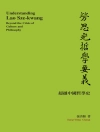The Forty Five Guardsmen Alexandre Dumas – A true sequel to ‘La Dame de Monsoreau.’ It concerns the revenge of Diane de Méridor upon the Duc d’Anjou for his base betrayal of Bussy d’Amboise. Historically it commences with the execution of Salcède and the arrival of the Forty-Five at Paris, and deals with the Guise intrigues, the campaign of Anjou in Flanders and his death. Period 1584-85.Maquet was again the collaborator. During the fête held at Villers-Cotterets in 1902 the original MS. of this romance was exhibited, half being in the hand of Dumas père, and the remainder, the latter moiety, in that of his son, with a note signed by this latter to the effect that his father, being confined to his bed by sickness, had dictated it to the younger man. Yet in face of this it has been repeatedly affirmed that Maquet finished it alone.
About the author
Alexandre Dumas is a celebrated French author best known for his historical adventure novels, including ‘The Three Musketeers’ and ‘The Count of Monte Cristo.’Who Was Alexandre Dumas?Alexandre Dumas established himself as one of the most popular and prolific authors in France, known for plays and historical adventure novels such as The Three Musketeers and The Count of Monte Cristo. He died on December 5, 1870, in Puys, France. His works have been translated into more than 100 languages and adapted for numerous films.












